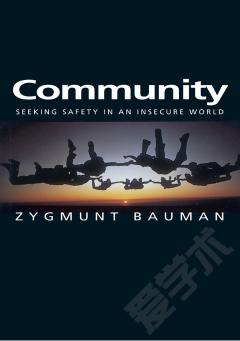Extending the European Security Community —— Constructing Peace in the Balkans
----- 扩大欧洲安全共同体:建构巴尔干和平
TABLE OF CONTENTS 1. CHAPTER ONE: INTRODUCTION 2. CHAPTER TWO: PEACE AS ORDER 2.1. Introduction 2.2. What is Order? 2.2.1. The Cooperation Aspect 2.2.2. The Security Aspect 2.3. Different Theoretical Views on Order 2.3.1. Neorealist Perspective on Order 2.3.2. Neoliberal Perspective on Order 2.3.3. Constructivist Perspective on Order 2.3.4. Neoliberal-Constructivist Perspective on Order 2.4. Conclusion 3. CHAPTER THREE: ESTABLISHING SECURITY COMMUNITIES 3.1. Introduction 3.2. The Analytical Framework of Security Communities 3.2.1. Democratic Security Community 3.3. Initiating Security Communities 3.3.1. Hegemonic Power Revisited 3.3.1.A. Socialisation Power 3.3.1.B. The Security-Community-Order as Hegemonic Peace 3.3.2. Elite Security Community 3.3.2.A. Why Elites? 3.3.2.B. The Decision-Making Pattern of an Elite Security Community 3.4. Conclusion 4. CHAPTER FOUR: THE INTERNATIONAL SOCIALISATION OF THE BALKANS 4.1. Introduction 4.2. Norms and Rules 4.3. What is Socialisation? 4.3.1. Socialisation by International Organisation 4.3.2. Socialisation in International Organisations 4.3.3. The Socialisation Process 4.4. Why Are International Organisations Interested in Socialisation? 4.5. How Can Socialisation Extend Peace? 4.6. Conclusion 5. CHAPTER FIVE: THE CENTRALITY OF THE EU AND NATO IN EUROPEAN SECURITY 5.1. Introduction 5.2. The Terms of the Post-1999 European Order 5.2.1. Securitisation of Western Norms 5.2.1.A. Inclusion of the Balkans in the Integration Programmes of the EU and NATO 5.2.1.B. The Limitations of the UN and the OSCE 5.2.2. Functional Differentiation between the EU and NATO 5.3. The Effects of "9/11" 5.4. Conclusion 6. CHAPTER SIX: EXPORTING THE EU TO THE BALKANS 6.1. Introduction 6.2. From a Union of Europe to the European Union 6.3. EU Approaches to the Balkans 6.3.1. Foreign Policy Approaches to the Balkans 6.3.1.A. Bulgaria and Romania 6.3.1.B. The Western Balkans 6.3.2. Enlargement into the Balkans 6.3.2.A. Bulgaria and Romania 6.3.2.B. The Western Balkans 6.3.2.C. Regional (Peaceful) Cooperative Interactions 6.4. Bulgaria 4.1. The EU-driven elite-socialisation 6.4.2. Foreign Policy Behaviour 6.5. Croatia 6.5.1. The EU-driven elite-socialisation 6.5.2. Foreign Policy Behaviour 6.6. Conclusion 7. CHAPTER SEVEN: NATO'S PROJECTION OF ORDER TO THE BALKANS 7.1. Introduction 7.2. NATO Background 7.3. NATO after the Cold War 7.4. Association 7.4.1. Romania 7.4.1.A. Context of NATO Involvement 7.4.1.B. International Behaviour 7.5. Enforcement 7.5.1. Serbia/Montenegro 7.5.1.A. Supportive Enforcement 7.5.1.B. Peace-Enforcement 7.5.1.C. Preventive Enforcement 7.6 Conclusion 8. CHAPTER EIGHT: CONCLUSION 8.1. Research Summary: The Hegemonic Peace Project - A Contradiction in Terms? 8.2. The Elite Security Community of the Balkans: Problems 8.3. Peace in the Balkans: Prospects
{{comment.content}}








 京公网安备 11010802027623号
京公网安备 11010802027623号